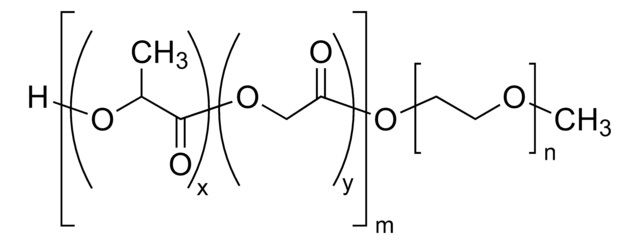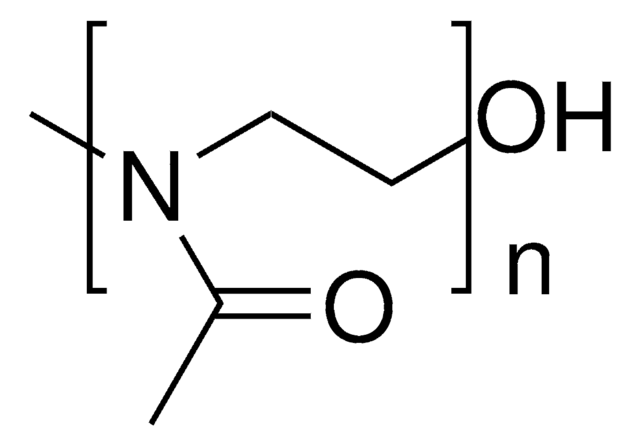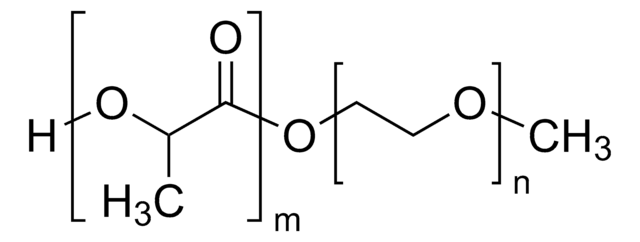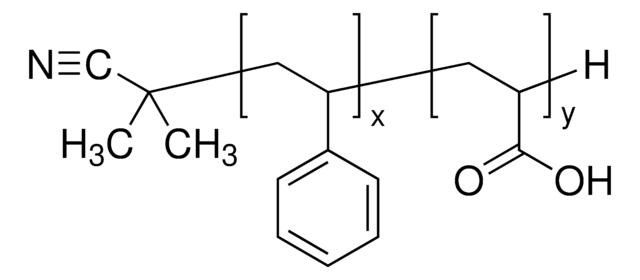Wichtige Dokumente
908843
Poly(lactide-co-glycolide)-b-poly(ethylene glycol)-b-poly(lactide-co-glycolide)
average Mn (1,600-1,500-1,600), lactide:glycolide 75:25
Synonym(e):
PLGA-PEG-PLGA
About This Item
Empfohlene Produkte
Form
semisolid
Zufuhrverhältnis
lactide:glycolide 75:25
Mol-Gew.
PEG average Mn 1,500 (by NMR)
PLGA average Mn 3,200 (by NMR)
average Mn (1,600-1,500-1,600)
Farbe
white to tan
PDI
≤2.0
<1.1 (Typical PEG PDI )
Lagertemp.
−20°C
Suchen Sie nach ähnlichen Produkten? Aufrufen Leitfaden zum Produktvergleich
Anwendung
Lagerklassenschlüssel
10 - Combustible liquids
WGK
nwg
Flammpunkt (°F)
Not applicable
Flammpunkt (°C)
Not applicable
Hier finden Sie alle aktuellen Versionen:
Analysenzertifikate (COA)
It looks like we've run into a problem, but you can still download Certificates of Analysis from our Dokumente section.
Wenn Sie Hilfe benötigen, wenden Sie sich bitte an Kundensupport
Besitzen Sie dieses Produkt bereits?
In der Dokumentenbibliothek finden Sie die Dokumentation zu den Produkten, die Sie kürzlich erworben haben.
Global Trade Item Number
| SKU | GTIN |
|---|---|
| 908843-1G |
Unser Team von Wissenschaftlern verfügt über Erfahrung in allen Forschungsbereichen einschließlich Life Science, Materialwissenschaften, chemischer Synthese, Chromatographie, Analytik und vielen mehr..
Setzen Sie sich mit dem technischen Dienst in Verbindung.








